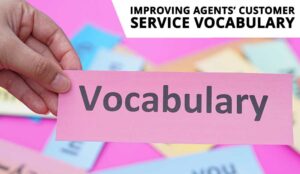Janna Pugh at Five9 explores what makes up communication styles, the types you should know, and tips to master workplace communication styles.
When you’re a customer service agent, one of the keys to connecting with customers is how well you understand and adapt to different communication styles.
Knowing the types of communication styles and when to use them can help you build rapport with customers, manage misunderstandings, and even improve your own job satisfaction.
What Is a Communication Style?
A communication style is the way a person expresses themselves, verbally and nonverbally. It’s about how they speak, listen, and respond. It’s also about how they receive and interpret information.
Communication styles influence how people interact in the workplace and shape the dynamics of all human interactions.
As an agent, identifying and adapting to different types of communication styles can help you ensure customers feel heard, seen, and understood – which leads to a better customer experience.
Types of Communication Styles
There are four primary types of communication styles. Understanding these can help you tailor your approach and connect more authentically with customers.
1. Passive Communication
In passive communication, people often prioritize others’ needs and may avoid confrontation. They might speak softly, apologize frequently, or use vague language. Customers with this style may hesitate to share issues openly or may downplay their frustrations.
- Pros: Agents who adapt to a passive communication style can come across as empathetic and approachable.
- Cons: It can lead to misunderstandings or unresolved issues if customers are not clear about what they need.
Pro Tip: To help passive customers, ask open-ended questions to encourage them to share their thoughts and feelings more openly.
2. Aggressive Communication
Aggressive communicators are direct, sometimes demanding, and prioritize their own needs. They may speak loudly, interrupt others, or use a harsh tone.
While this style can be challenging, it usually signals that the customer wants quick solutions and direct answers. Customers may be in a state of heightened negative sentiment.
- Pros: Agents who adapt to this style can provide clarity and swift action.
- Cons: It risks escalating tension if the agent matches the aggressive tone or responds defensively.
Pro Tip: Stay calm and neutral. Use clear language and focus on providing solutions. Avoid taking a defensive stance, and instead, acknowledge the customer’s urgency and/or frustration.
3. Passive-Aggressive Communication
Passive-aggressive communicators may seem cooperative on the surface but may harbour hidden frustrations.
This style often shows up as sarcasm, indirect hints, or procrastination. Customers with this style might express dissatisfaction subtly instead of stating it outright.
- Pros: With a bit of tact, agents can pick up on passive-aggressive cues and address underlying issues.
- Cons: Misunderstandings can easily arise if agents misinterpret these cues.
Pro Tip: Respond with clear, empathetic communication. If you sense unresolved issues, try gently asking if there’s anything else you can assist with to encourage openness.
4. Assertive Communication
Assertive communicators express their thoughts and feelings clearly while respecting others. They use direct, respectful language and show a willingness to collaborate. This style is often ideal for resolving issues and finding common ground.
- Pros: Assertive communication is effective for finding mutually beneficial solutions.
- Cons: Some people may interpret assertive communication as too direct if they are used to a more passive style.
Pro Tip: Mirror assertiveness by being clear, respectful, and cooperative. This helps build rapport and encourages open dialogue with customers.
What Else Impacts Communication Styles?
While these are the main types, remember that workplace communication styles can vary widely based on factors like cultural background, personality, generational styles, and even the customer’s mood.
Cultural norms, for example, can affect how direct or indirect a customer might be in expressing needs. Some customers might also adopt different styles depending on the nature of the problem or how stressed they feel.
As an agent, it’s crucial to stay adaptable and observant. Listen for tone, language choice, and even pauses to get a sense of how a customer is feeling and how best to respond.
Tips to Improve Your Communication Style as an Agent
- Practise Active Listening: Instead of focusing on what you’ll say next, really listen to the customer. This helps you pick up on their communication style and respond in a way that meets their needs.
- Stay Neutral and Positive: Maintaining a calm and positive demeanour can help defuse tension and prevent miscommunications.
- Adjust Your Language: Match the customer’s language style. If they’re formal, mirror that formality. If they’re relaxed, keep your tone friendly and conversational.
- Ask Clarifying Questions: When a customer’s needs aren’t clear, politely ask clarifying questions. This helps ensure you understand them correctly and shows you care about getting it right.
- Seek Feedback: Ask a colleague or supervisor to give you feedback on your communication style. Knowing how others perceive you can help you adjust and grow.
Mastering Workplace Communication Styles
For customer service agents, mastering different workplace communication styles is key to delivering joyful customer experiences.
By understanding passive, aggressive, passive-aggressive, and assertive communication styles, you’ll be able to handle diverse interactions with greater ease.
Remember, a little awareness and adaptability go a long way in improving customer satisfaction – and your own experience as an agent.
This blog post has been re-published by kind permission of Five9 – View the Original Article
For more information about Five9 - visit the Five9 Website
Call Centre Helper is not responsible for the content of these guest blog posts. The opinions expressed in this article are those of the author, and do not necessarily reflect those of Call Centre Helper.
Author: Five9
Published On: 14th Nov 2024 - Last modified: 19th Nov 2024
Read more about - Guest Blogs, Five9






 Five9 empowers organizations to create hyper-personalized and effortless AI-driven customer experiences that deliver better business outcomes. Powered by Five9 Genius AI and our people, the Five9 Intelligent CX Platform is trusted by 3,000+ customers and 1,400+ partners globally. The New CX starts here and it's at the heart of every winning experience.
Five9 empowers organizations to create hyper-personalized and effortless AI-driven customer experiences that deliver better business outcomes. Powered by Five9 Genius AI and our people, the Five9 Intelligent CX Platform is trusted by 3,000+ customers and 1,400+ partners globally. The New CX starts here and it's at the heart of every winning experience. 










